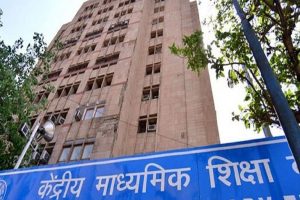Every citizen has been given a right to freedom of speech and expression to express their views by the Indian Constitution under Article 19(1)(a). However, this right to freedom is not absolute and some reasonable restrictions have been imposed on such freedom of speech and expression under Article 19(2).
But when a person does an act by his words, signs or representation which is held to be contemptuous towards the Government of India, then such act is punishable under section 124 A (i.e., Sedition) of Indian Penal Code, 1860.
In British era, Section 124 A was not a part of the Indian Penal Code, 1860. But this Section was inserted into IPC by the IPC (Amendment) Act, 1870. By an amending act of 1898, this provision was later replaced by Section 124 A. According to the British Era Law, under the old IPC, “Exciting or attempting to excite feelings of disaffection was considered as Sedition”.
Sedition has broadly been understood by many as an offence against public tranquillity and being connected in some way or the other with public disorder.
The Indian Penal Code under Section 124 A defines sedition as an offence committed when “any person by words, either spoken or written, or by signs, or by visible representation, or otherwise, brings or attempts to bring into hatred or contempt, or excites or attempts to excite disaffection towards the government established by law in India”.
The Supreme Court docket on Monday mentioned “it’s time to outline the boundaries of sedition” even because it protected two Telugu channels from any coercive motion by the Y.S. Jaganmohan Reddy led Andhra Pradesh authorities for his or her reportage of the COVID-19 pandemic within the State.
A three-judge Bench led by Justice D.Y. Chandrachud flagged indiscriminate use of the sedition regulation towards critics, journalists, social media customers, activists and residents for airing their grievances concerning the governments COVID-19 administration, the second wave of the pandemic.
“It’s time to outline the boundaries of sedition,” Justice Chandrachud mentioned. He identified that the Court docket had categorically informed the States to not provoke penal motion towards the critics of COVID-19 administration measures in an April 30 order.
Justice Chandrachud referred to how, in an earlier suo motu listening to, he was puzzled whether or not sedition costs can be launched towards a information channel, which had revealed {photograph} of two individuals throwing the physique of a COVID-19 affected person right into a river from a bridge in Uttar Pradesh.
TV5, represented by senior advocate Shyam Divan and advocate Vipin Nair, and ABN Andhrajyothi argued that the sedition FIR towards them. The State had accused them of sedition for reporting information concerning the pandemic in an “unbiased method”.
The bench noted there was a need to define the scope of offences under Section 124A (sedition) and 153A (promotion of communal hatred) under the IPC, especially in the context of media freedom.
Image Source: Study IQ Question













Add Comment